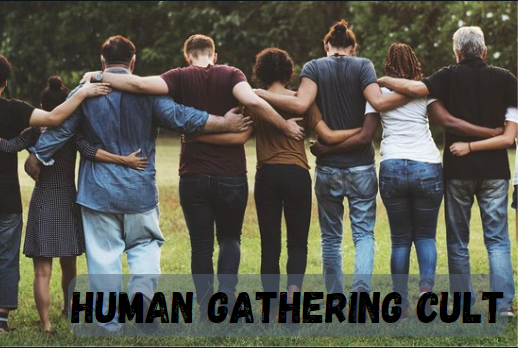The “kuffeye,” also commonly known as the keffiyeh, is more than just a piece of clothing. It holds profound cultural, historical, and political significance in various parts of the world, especially in the Middle East.
Traditionally worn by men, it serves as a symbol of heritage, pride, and, more recently, resistance. In this comprehensive article, we will explore the deep-rooted significance of the kuffeye, its history, cultural impact, and how it has transcended borders to become a global fashion statement.
Contents
What is the Kuffeye?
The kuffeye (keffiyeh or kufiya) is a traditional Middle Eastern headdress fashioned from a square-shaped scarf, typically made of cotton or a cotton blend. It is often worn wrapped around the head and secured with an agal—a black cord designed to keep it in place. This headscarf is commonly found in the Levant, Arabian Peninsula, and Mesopotamia regions, and its origins date back centuries.
Historically, the kuffeye was used as a practical piece of clothing to protect the wearer from the harsh desert elements—such as the scorching sun, sandstorms, and cold desert nights. Over time, however, it has evolved beyond a utilitarian function to become a prominent cultural emblem that represents different ideas depending on the context and the wearer’s identity.
Key Features of the Kuffeye
- Material: The kuffeye is primarily made of cotton, though modern versions sometimes incorporate synthetic fibers. Cotton allows for breathability, while also providing sufficient protection from both heat and cold.
- Size: It is generally around a square meter in size.
- Patterns: The scarf often features traditional checkered patterns, which may vary in color depending on the region or the political affiliations of the wearer.
- Colors: The most common colors are black and white or red and white. However, other colors like green and white or yellow and white can also be found in some regions.
Historical Roots of the Kuffeye
Origins in Ancient Mesopotamia
The exact origins of the kuffeye are not definitively known, but many historians trace its roots back to ancient Mesopotamia. The headscarf was likely used by both farmers and Bedouins in this region for its practical utility. The harsh desert environment necessitated protection from the sun and sand, and the kuffeye provided a versatile, durable solution.
In the early days, the headscarf was largely a symbol of practicality and necessity. However, as various empires and cultures rose and fell across the Middle East, the kuffeye began to take on additional meanings.
The Kuffeye in the Early 20th Century
By the 20th century, the kuffeye had evolved into more than just practical desert wear—it became an emblem of identity. In Palestine, the black-and-white kuffeye, in particular, became a symbol of resistance against British colonial rule and later, against Israeli occupation. Worn by political figures like Yasser Arafat, it became a visual representation of the Palestinian struggle for independence. This period marked a shift in the kuffeye’s role from simple headgear to a politically charged symbol.
Cultural Significance of the Kuffeye
Identity and Heritage
The kuffeye has deep ties to Middle Eastern identity and heritage. In many parts of the Arab world, it is worn as a marker of social status, region, or tribe. The colors and patterns of the kuffeye can indicate a person’s origins, whether they are Palestinian, Jordanian, or from another Middle Eastern country. For example:
- Black and White Kuffeye: Often associated with Palestine and the Palestinian cause.
- Red and White Kuffeye: Popular in Jordan and parts of the Arabian Peninsula. In Jordan, it is known as the “Shemagh” and often worn as a national symbol.
Beyond this, the kuffeye also signifies one’s connection to a Bedouin or rural lifestyle, highlighting the wearer’s respect for tradition and roots in the land.
Symbol of Resistance and Solidarity
In the 20th century, the kuffeye became synonymous with the Palestinian resistance movement. This shift began during the 1936–1939 Arab revolt in Palestine, and its association with the cause was solidified when Palestinian leader Yasser Arafat wore it prominently. The black-and-white checkered pattern became an international symbol of Palestinian solidarity.
Over time, the kuffeye transcended political borders, adopted by activists and sympathizers around the world as a statement of solidarity with oppressed peoples. It became a powerful emblem of resistance, not just in the Middle East but also in global anti-imperialist and anti-colonial movements.
Fashion and Global Influence
In recent years, the kuffeye has gained popularity as a fashion accessory, especially in Western countries like the United States. Its checkered design and cultural weight make it a popular item for those seeking to make a political statement, as well as for those who appreciate its aesthetic qualities.
Fashion designers have incorporated the kuffeye into high fashion, introducing it into runways and clothing lines. Celebrities, including artists and activists, have been seen wearing the kuffeye, further cementing its status as a cultural icon with global reach.
While some may argue that its widespread adoption as a fashion accessory dilutes its political significance, others see it as a way for the symbol to reach new audiences, spreading awareness of the struggles it represents.
Modern-Day Usage of the Kuffeye
Everyday Wear in the Middle East
Despite its global influence, the kuffeye remains a staple of everyday life in the Middle East. It is still widely used by men—particularly in rural areas—as protection from the elements. Many wear it during farming, construction work, or travel through the desert. The kuffeye has retained its original practical use in these contexts, demonstrating its enduring utility.
Political Symbolism
The kuffeye’s political symbolism is still prevalent in various movements across the globe. From protests in the United States to rallies in Europe, activists have donned the kuffeye as a visual representation of their stance against oppression. It is a symbol of resistance that resonates with multiple social justice causes, including anti-colonialism, anti-racism, and advocacy for the rights of refugees.
However, the political symbolism of the kuffeye can sometimes lead to controversies, especially in regions where its meaning is not widely understood. Some have viewed its use as an inappropriate appropriation, particularly when worn solely as a fashion accessory without acknowledgment of its historical and political significance.
How to Wear a Kuffeye
While the traditional way of wearing a kuffeye is to wrap it around the head and secure it with an agal, there are various ways to style it, depending on personal preference and context.
Classic Head Wrap
- Fold the kuffeye in half to create a triangle.
- Place the long edge of the triangle across your forehead.
- Bring the two ends around the back of your head and cross them.
- Bring the ends forward over your shoulders, adjusting for comfort.
Neck Scarf Style
For those who prefer a more casual look, the kuffeye can be worn as a neck scarf:
- Fold the scarf into a triangle.
- Place the center of the triangle on your chest.
- Wrap the ends around your neck and tie them loosely in front.
Shoulder Drape
The kuffeye can also be draped over the shoulders as a shawl, providing both a stylish and functional look.
FAQs About Kuffeye
1. What is the origin of the kuffeye?
The kuffeye originated in the Middle East, likely in ancient Mesopotamia, where it was used by Bedouins and farmers to protect against harsh desert conditions.
2. Is the kuffeye still relevant today?
Yes, the kuffeye remains both a practical piece of clothing in Middle Eastern culture and a symbol of political resistance and solidarity globally.
3. Can anyone wear a kuffeye?
While anyone can wear a kuffeye, it is important to understand its cultural and political significance, especially if it is worn outside of its traditional context.
4. What are the different colors of the kuffeye, and what do they mean?
The black-and-white kuffeye is often associated with Palestine, while the red-and-white version is more common in Jordan and parts of the Arabian Peninsula. Each color can represent different regional or political identities.
5. How should I care for a kuffeye?
Most kuffeyas are made of cotton and can be hand-washed or machine-washed on a gentle cycle. It is best to air dry to preserve the fabric’s quality.
Conclusion
The kuffeye is much more than a simple square scarf. It is a symbol of heritage, identity, and resistance that has transcended its humble origins. From the deserts of the Middle East to the streets of New York, the kuffeye has made its mark on the world, resonating with individuals across different cultures and political movements. Understanding the significance of the kuffeye allows us to appreciate its deeper meanings and its role as a bridge between tradition and modernity.




